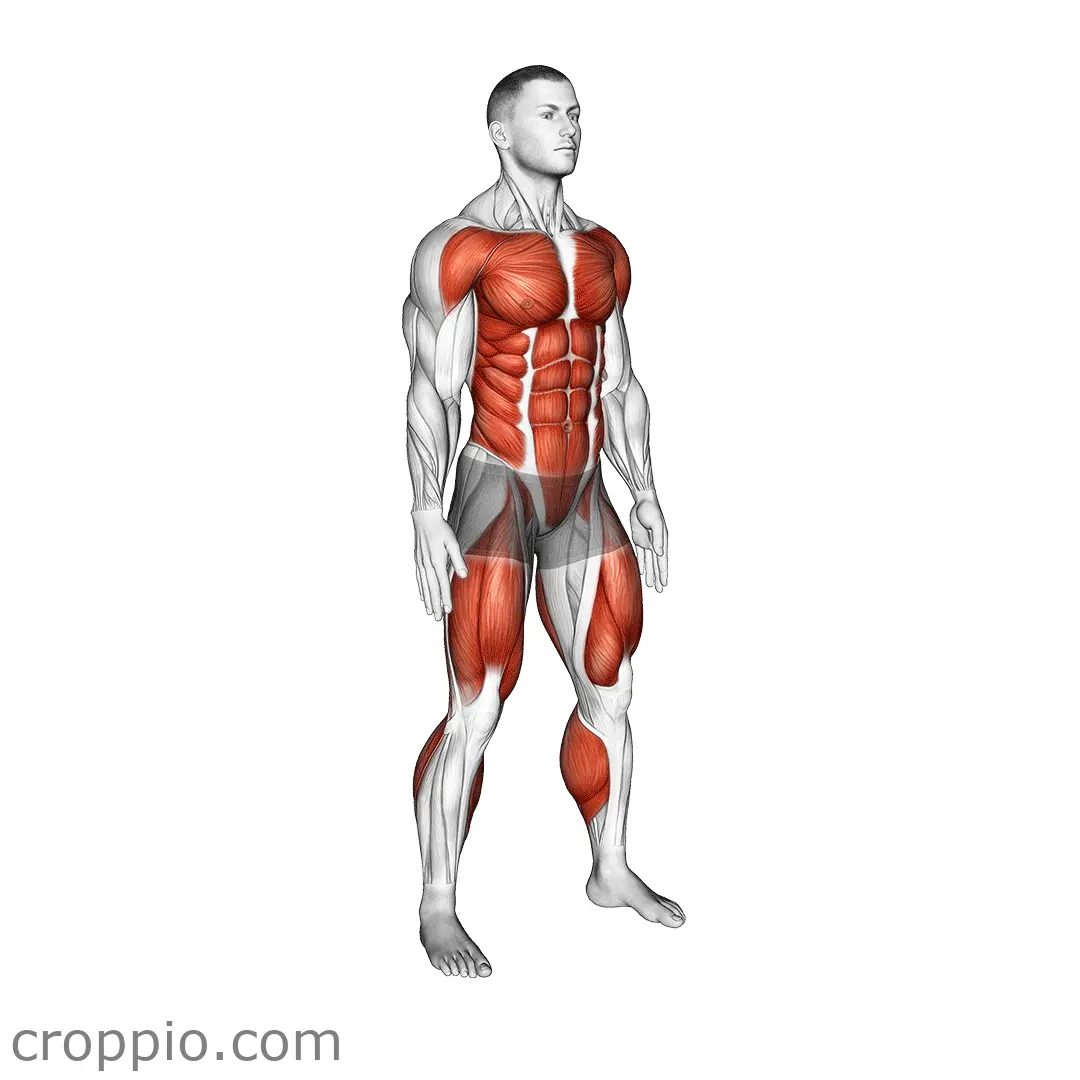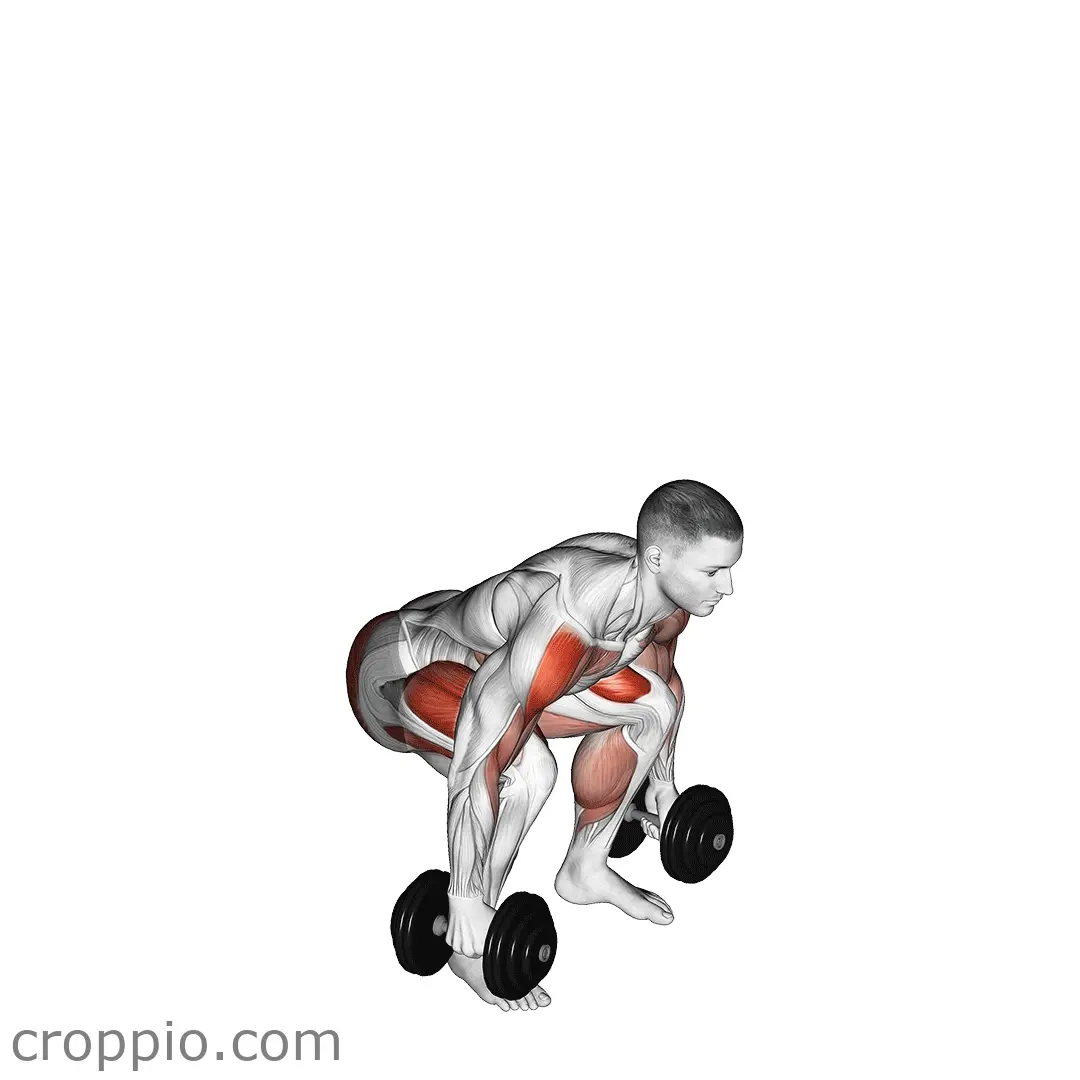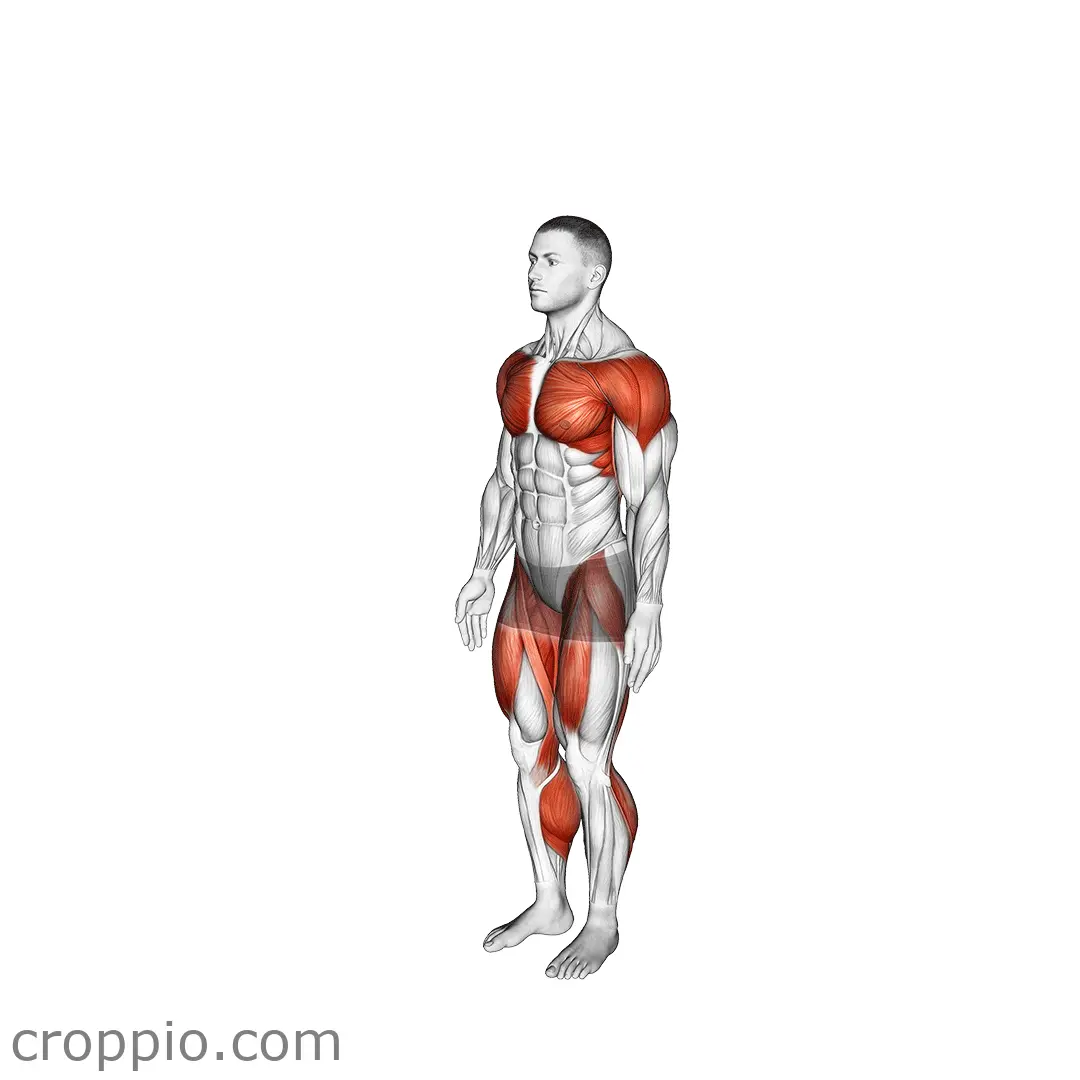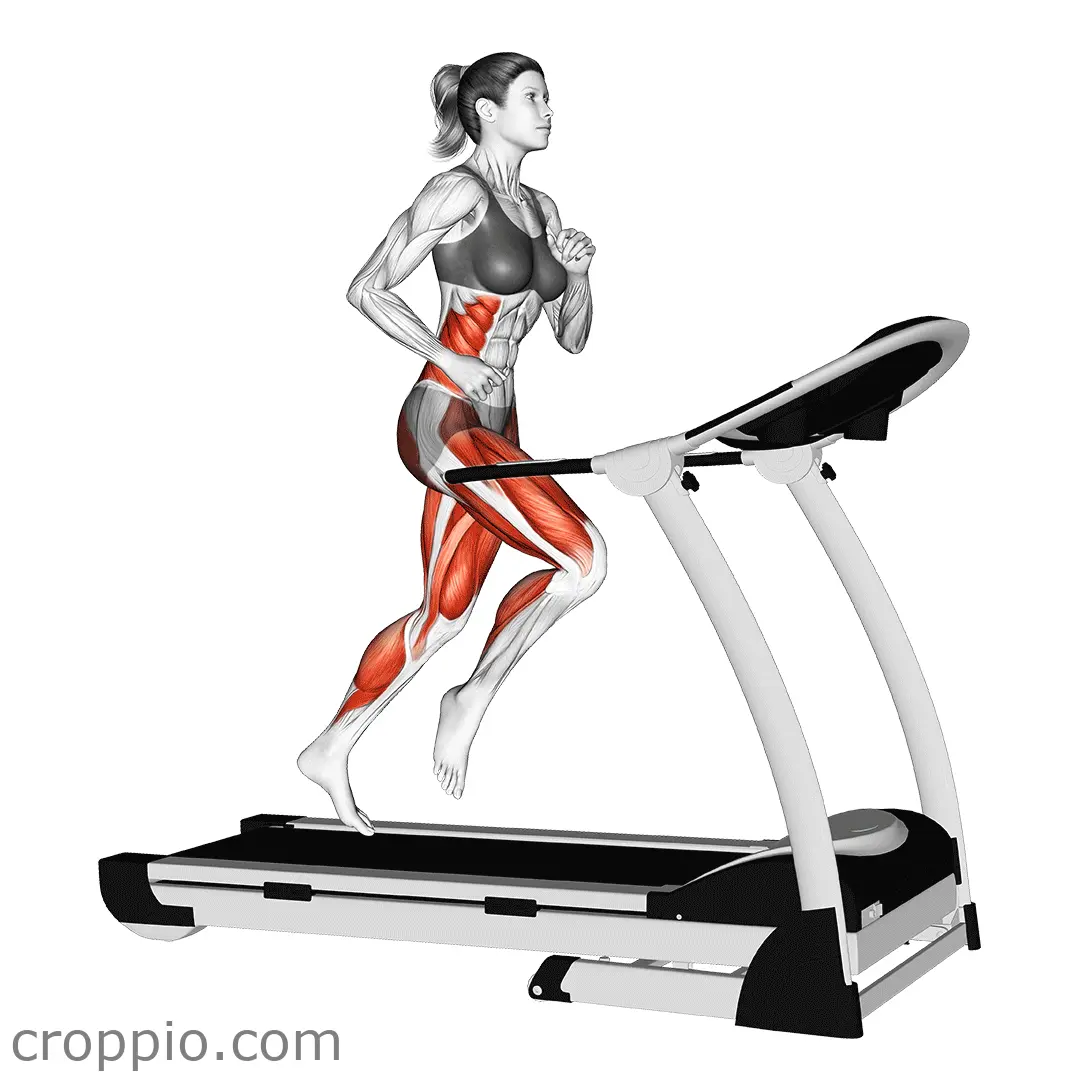Trap Bar Jump Squat
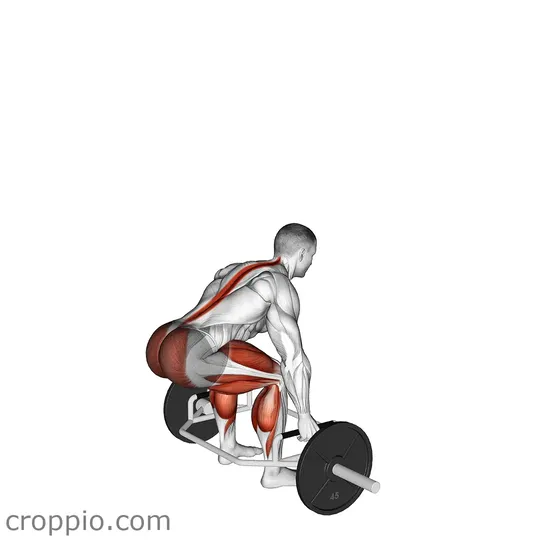
Muscles Involved
The trap bar jump squat is a dynamic lower-body exercise that primarily targets the quadriceps, hamstrings, and glutes. These muscle groups work synergistically to facilitate explosive movements, enhancing strength and power. The quadriceps are engaged as you initiate the squat and explode upward, while the hamstrings and glutes help stabilize and propel the body during the jump. Additionally, the exercise engages the core muscles, including the rectus abdominis and obliques, for stability and balance, while the calves also play a role in the jumping motion.
Top Mistakes
- Improper grip on the trap bar, which can lead to instability and ineffective force transfer.
- Allowing the knees to cave inward during the squat, increasing the risk of injury.
- Jumping with poor posture, failing to keep the chest up and back straight.
- Not achieving a full squat depth before jumping, limiting the effectiveness of the exercise.
Execution Tips
- Begin with a proper grip: ensure your hands are evenly positioned on the trap bar handles and maintain a firm grip throughout the movement.
- Keep your feet shoulder-width apart and point them slightly outward to maintain balance and optimal knee alignment.
- During the squat, lower your body until your thighs are parallel to the ground, ensuring your knees stay aligned with your toes.
- As you jump, extend your hips and knees explosively, allowing your arms to assist in the upward motion for better momentum.
- Land softly, absorbing the impact through your legs before transitioning back into the squat position.
Workouts
The trap bar jump squat can be effectively incorporated into your workout routine as a primary power exercise. Consider performing 3 to 4 sets of 5 to 10 repetitions. Ensure adequate rest (2-3 minutes) between sets to perform each with optimal form. To complement this exercise, incorporate movements such as barbell squats, lunges, and deadlifts for a comprehensive lower-body workout. Additionally, pairing with upper-body exercises like bench press or rows can provide a well-rounded training session.
Conclusion
The trap bar jump squat is an excellent addition to any strength training program, offering a unique blend of power, strength, and explosiveness. By engaging multiple muscle groups and promoting athletic performance, it not only improves functional strength but also enhances overall fitness and coordination. When performed with proper technique and included in a balanced workout routine, the benefits can lead to improved athletic capabilities and a reduced risk of injury.
